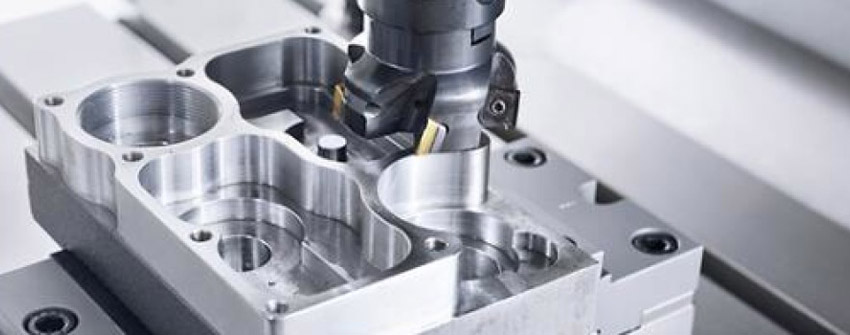In CNC machining, precision and productivity are governed not only by cutting tools and machine capabilities but also by how well machining parameters are selected. One of the most important of these parameters is SFM, or Surface Feet per Minute. Though often referenced in tooling catalogs and CAM software, SFM is still widely misunderstood by many beginner machinists and even some seasoned operators.
This article offers a comprehensive explanation of what SFM is, why it matters, how to calculate it, and how it affects machining outcomes such as tool life, surface finish, and overall efficiency.
What Is SFM?
SFM (Surface Feet per Minute) is a unit of cutting speed that refers to how fast the surface of a rotating workpiece or tool moves past the cutting edge of a tool. It measures the relative velocity between the cutting tool and the material being machined, expressed in feet per minute (imperial) or meters per minute (metric, known as m/min).
Rather than focusing on how fast the spindle is rotating (RPM), SFM takes into account the diameter of the tool or workpiece—because a larger diameter at the same RPM results in a higher surface speed.
In simple terms:
SFM helps ensure that the cutting edge is moving at the optimal speed for the material being machined, which is crucial for cutting performance, tool longevity, and surface quality.
Why Is SFM Important in CNC Machining?
SFM in mechanical processing is a very important factor. It tells us the speed at which the cutting tool moves on the surface of the material. Appropriate speed helps ensure quality, tool life, and efficiency. The following are the main reasons why SFM is important:
1. Tool Life
If the SFM is too high, the tool may quickly overheat, causing rapid passivation, and even cracking and fracture. On the other hand, if the SFM is too low, the tool may rub against the material instead of cutting effectively, resulting in excessive wear.
Choosing the appropriate surface speed in feet per minute (ft/min) means a longer tool life. This can save you the cost of purchasing new tools and the time needed to replace them. Therefore, good surface performance (SFM) means better tool health and lower costs.
2. Surface Smoothness
SFM controls the final surface finish of the material. The correct cutting speed can make the cutting cleaner. But if the cutting speed is too fast or too slow, the surface will become rough, burnt, or ripple.
Good surface finish is crucial in industries such as aerospace or medical components. If the surface finish is poor, the parts will not meet the quality standards. The correct SFM can avoid rework and waste.
3. Cutting Efficiency
Using the correct SFM in processing can remove materials in a shorter amount of time. This means that the machining process is faster without damaging the tools or materials.
This is particularly useful in production projects. If SFM is optimized, more parts can be produced in a shorter amount of time, which means higher productivity and lower unit costs.
4. Adjust According To The Material
Different materials require different cutting speeds. For example, aluminum materials can be cut using higher SFM due to their high hardness; Due to its high hardness, steel requires a lower SFM. If the wrong SFM is used for a specific material, it can damage the tool and workpiece.
5. Use In Conjunction With Other Settings
SFM is related to RPM (revolutions per minute) and the size of the tool or workpiece. You cannot only set one of them without considering the other settings.
If the tool diameter increases, the RPM must be correspondingly reduced to maintain a consistent SFM. Otherwise, the tool will rotate too fast and overheat. Understanding how SFM works in conjunction with the entire setup can help avoid errors and ensure smooth machine operation.

Factors affecting SFM settings
Choosing the appropriate SFM is crucial as it can affect surface smoothness, tool life, and the speed of machining completion. The following are the main factors that affect SFM settings:
- Materials
Different materials require different speeds. Softer materials, such as aluminum, can be cut at higher SFMs because they are easier to process. Harder materials such as stainless steel or titanium require lower speeds to avoid burning the tool or overheating the workpiece.
- Cutting tools
The tool itself is very important. Hard alloy cutting tools can withstand higher speeds than high-speed steel (HSS) cutting tools. Hard alloy cutting tools are harder and maintain sharpness for longer periods of time, allowing them to cut faster without wearing out too quickly.
- Tool diameter
The diameter of the tool will affect its rotational speed. Even if the spindle speed (RPM) remains constant, larger tool edges will rotate faster. Therefore, when setting up SFM, the tool diameter must be considered. Larger cutting tools require lower rotational speeds to maintain a suitable SFM range.
- Coolant and lubrication
Using coolant or cutting fluid can reduce heat and friction. When using coolant, the machine tool can operate at a higher SFM without burning out the tools or materials. If there is no coolant, it may be necessary to reduce the cutting speed to ensure temperature safety.
- Machine tools
Different types of CNC machine tools have their own limitations. Some machine tools cannot achieve high spindle speeds, and the rigidity of some machine tools may not be sufficient for high-speed cutting in hard materials. The power and stability of the machine tool will affect the safe setting of the SFM speed.
Conclusion
Understanding and applying the correct SFM is fundamental to successful CNC machining. It’s more than just a number—it’s a critical element in the fine balance between speed, precision, and cost-effectiveness. Choosing the right SFM helps reduce tool wear, improve surface finishes, and maintain consistent production quality.
Whether you’re programming a new job, selecting tooling for a difficult material, or trying to reduce cycle times, mastering SFM is an essential skill. As CNC machines become more intelligent and automated, SFM will continue to be a key performance variable that bridges the gap between theory and practical machining success.



